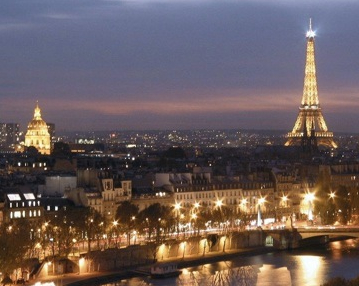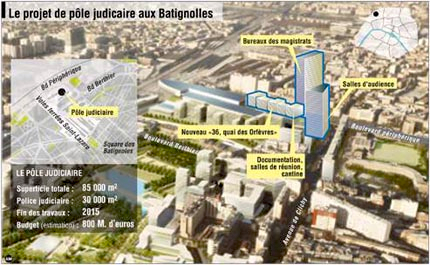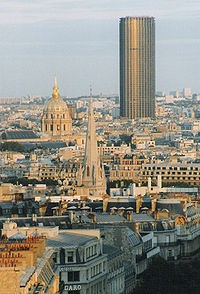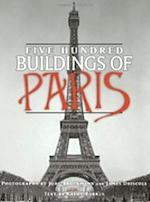Can Parisians Defeat the Towers?

- SUBSCRIBE
- ALREADY SUBSCRIBED?
BECOME A BONJOUR PARIS MEMBER
Gain full access to our collection of over 5,000 articles and bring the City of Light into your life. Just 60 USD per year.
Find out why you should become a member here.
Sign in
Fill in your credentials below.
 Parisians on a rampage have burned down more than one monument in their 2,000-year history, and Napoleon III and his Prefect Baron Haussmann wiped out whole neighborhoods. Yet through divine blessing or sheer luck and skill, by 1870, Haussmann had turned a city of cramped medieval villages into the modern Paris we love, with boulevards stretching to the beautiful Paris sky.
Parisians on a rampage have burned down more than one monument in their 2,000-year history, and Napoleon III and his Prefect Baron Haussmann wiped out whole neighborhoods. Yet through divine blessing or sheer luck and skill, by 1870, Haussmann had turned a city of cramped medieval villages into the modern Paris we love, with boulevards stretching to the beautiful Paris sky.
When Edith Piaf sang of that ciel de Paris sky 80 years later, could she have dreamed that politicians might someday want to pierce that low skyline with towers? On July 9, 2008, in fact, the Socialist-dominated Paris City Council created a Parisian’s nightmare when it overturned longstanding height limits and voted to raise the height limits for housing from roughly 10 stories in the center of the city and roughly 12 stories on the periphery, to roughly 15 to 20 stories (50 meters) on the periphery. It approved building tower projects at six of the gates of Paris. Commercial high-rises may now go up to about 55 stories (200 meters), an enormous height in a city of six- and eight-story buildings.

The City Council’s first tower project is as in-your-face as a tower can be. Called Project Triangle, it is the creation of Swiss architects Herzog & de Meuron. This 50-story (180-meter) hotel-and-office building will poke up at the Porte de Versailles in the 15th arrondissement, smack in the line of sight of the 81-story (325 meter) Eiffel Tower.
Next, the City Council wants a 44-story (160 meters) tower for the law courts, in a giant mixed-use development at Clichy-Batignolles in the 17th arrondissement. President Sarkozy, meanwhile, has announced a huge multi-faceted plan called “Grand Paris” that he says also requires building towers in Paris.
Always full of sensible questions, Edith Piaf might ask: Paris has been a low-rise city for millennia. Why this sudden passion for towers? The answer is money. Developers seek massive profits, and architects seek multi-million-dollar architectural fees. Governments, facing unbalanced budgets in the Great Recession, seek to sell their land to developers and then tax the towers and their corporate tenants, or even to invest in the projects.
We lovers of Paris from overseas may wish to ask a few questions of our own:
Do Parisians want these towers?
 No. Polls regularly show that Parisians oppose towers by from 55 to 60 percent. Paris-based preservationist organization SOS Paris has campaigned against the towers. The Paris Green Party, too, has vocally opposed towers, on ecological grounds.
No. Polls regularly show that Parisians oppose towers by from 55 to 60 percent. Paris-based preservationist organization SOS Paris has campaigned against the towers. The Paris Green Party, too, has vocally opposed towers, on ecological grounds.
Does Paris need towers to provide more housing, not just offices?
No. Paris may need housing, but high-rises will not solve the housing crisis. Towers mean grassy lawns, and long walks between buildings. But in fact, traditional Parisian blocks with their boxy six- and eight-story buildings, shops, and cafes already make Paris one of the densest capitals in the world. City Hall has revealed that its true interest is not housing, in any event, by capping lodgings at under 20 stories but allowing a corporate building, Project Triangle, to be 50 stories tall.
Has Paris ever built successful towers in the past?
Yes, once. The Eiffel Tower, built in 1889, is successful. But since then, all Parisian high-rises have been aesthetic failures. The Tour Montparnasse, at 51 stories (689 feet, or 210 meters), is visible from everywhere, and everyone hates it. When Paris-based writer Corinne LaBalme listed the ugliest buildings of Paris in Paris Magazine, they were all towers.
If Paris carefully restricts all these towers to the gates of the city, could they be so far from the center of Paris that we won’t even notice them?
No. Stand in central Paris and look west towards the towers of La Défense. They are plainly visible and loom over the Arc de Triomphe. Moreover, La Défense is the same distance from central Paris as the Porte de Versailles, and the average height of the tall buildings at La Défense is under 180 meters, the height of Project Triangle.
Is it true that without towers, Paris will become a museum city like Venice?
No. Paris is hopping with life inside its height limits. Today’s arguments about attracting corporations, needing modernity, and preventing Paris from becoming a museum—realistically the last possible danger—are the same arguments Le Corbusier used to support his notorious 1922-25 Voisin Plan for razing much of the Right Bank and erecting 16 high-rise towers. They are still bad arguments.
So should we just give up on Paris?
No! Never give up! Whether blessed or lucky, Paris has a history not only of wanton destruction, but of heroic rescue. Victor Hugo saved the Cathedral of Notre Dame when the wreckers almost got it. General Dietrich von Choltitz saved Paris against Hitler’s orders to destroy it. André Malraux saved the Marais. Indeed, legend says that in the late winter of A.D. 451, Saint Geneviève, the patron saint of Paris, saved Paris from Attila and the Huns.
What can we do?
Aux armes, citoyens! The preservationist organization SOS Paris seeks international support for its vigorous campaign against towers. You can join SOS Paris, or make a donation, in euros or dollars, on the web site. Join SOS Paris and help save Paris now!

The greatest buildings, monuments, and structures of Paris come to life in these inspiring, neighborhood-by-neighborhood photographic tours. Each building is featured in a rich, fine-resolution duotone photograph. Information including the building’s name, its address and location, and year of completion or renovation is included underneath the image.
Click here to order your copy of: Five Hundred Buildings of Paris
More in 15th arrondissement, 17th arrondissement, 7th arrondissement, architecture, highrise towers, Montparnasse Paris, Paris, social issues


